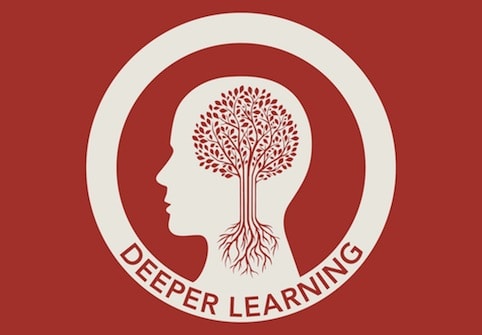Deeper Learning in High Need Schools

It is easy for schools that serve high-challenge communities to be preoccupied with remediation. With the growth of double-blocked core subjects and managed instruction programs, one can assume that engaging projects and what might be called enrichment activities only happen in independent or suburban schools. We found dozens of schools (and evidence of hundreds) serving low-income students coast to coast that refuse to default to a thin test-prep curriculum.
Recently I highlighted four schools that served diverse populations and successfully engaged all students in deeper learning, not just the honor students. All students were engaged in powerful learning experiences with strong academic support systems. All of the school had powerful cultures that developed an academic mindset and focused on college preparation.
Many of the schools we studied this summer serve high challenge low income communities. They share six characteristics that appear to support the success of low-income students. They:
- Share an equity focus: a mission to serve low income students and communities:
- Recognize but aren’t trapped by tests: use data constructively toward achievement of a broader set of Deeper Learning goals;
- Use quality assessments to encourage quality instruction: rigorous assessment of authentic work;
- Scaffold project-based learning: provide individual targeted academic support to support engaging team-based projects; and
- Provide fortified environments (as our friends at Turnaround for Children would say) to address negative effects of poverty: strong students supports and positive behavior management system.
- Broaden life experiences, make connections, and ask big questions
High Tech Middle Chula Vista is a good elementary example of these six practices. Sixth graders often arrive with academic skills below grade level, most dealing with the stress effects of poverty. Rather than a scripted approach, the faculty created curriculum is based on the High Tech Highdesign principles of common intellectual mission, adult world connection, and personalization. “Because we are dedicated to providing a personalized environment for our students, we are constantly finding new ways to change and individualize how we teach. We aim to scaffold our projects and provide multiple entry points for all students, leading toward quality products and outcomes in which the content is fully understood,” said humanities teacher Andrea Morton.
Modeled after the original High Tech High, the Chula Vista site is 25 miles southeast of San Diego and serves a higher-need population. Teachers constantly monitor student performance and quickly modify instructional strategies. Morton said, “If a student doesn’t understand a concept, teachers will offer one-on-one tutoring to ensure they do; a tutoring center is also available after-school. She noted that students often have the opportunity to work with local experts and other community members as they “develop their critical thinking, critique, and presentation skills.” In the process, they “create beautiful, relevant work to share in the ‘real world.’
Schools in the New Tech Network, like METSA in Carrollton Texas, use project-based learning to engage low-income students in Deeper Learning. “Our mission ensures that students are strategically prepared for the rigor and self-discipline of college and the innovative demands of STEM career pathways,” said METSA school director Mansoureh Tehrani despite the fact that more than 70 percent of the Carrollton, Texas students live in or near poverty.
New Tech students “collaborate on projects that require critical thinking and communication. By making learning relevant to them in this way, student engagement reaches new levels. This higher level of engagement is associated with better educational outcomes.” Network results suggest that, “Working on projects and in teams, students are accountable to their peers and acquire a level of responsibility similar to what they would experience in a professional work environment.”
The School of Digital Media and Design, one of four career-focused autonomous high schools within the Kearney Educational Complex in San Diego, California, focuses on real-world assignments and the development of an academic mindset. The latter is a significant challenge for many, according to Principal Cheryl Hibbeln who serves a student population that is 85 percent minority and 67 percent free and reduced lunch. Because many students are functioning below grade-level, they require additional supports in order to develop academic competency as well as communication, collaboration, and other skills required to work with outside professionals to complete complex projects. The DMD staff tackles these issues with what Hibbeln calls, “an intentional multi-grade approach and common instructional expectations for Deeper Learning.” She added, “The staff works to create meaningful and relevant standards-based lessons, establishes high expectations, and then supports students as they take on the tasks set before them.” Supporting students in developing these higher level skills has precipitated a shift in planning and instruction, project work, and the structure of DMD courses.
Even though Minnesota New Country School is located in a town of only 900 in Henderson, Minnesota, Director Dee Thomas “wants to make sure they have a world focus.” They make sure they are exposed to the types of experiences that are not standard for poor farm boys in rural Minnesota, such as museums and opera and theater, etc. “To take a bunch of farm boys to the opera for the first time is amazing,” she said. “I took nine kids to Seattle. We got on the plane and I asked, ‘How many of you have ever flown before?’ Less than half.”







0 Comments
Leave a Comment
Your email address will not be published. All fields are required.